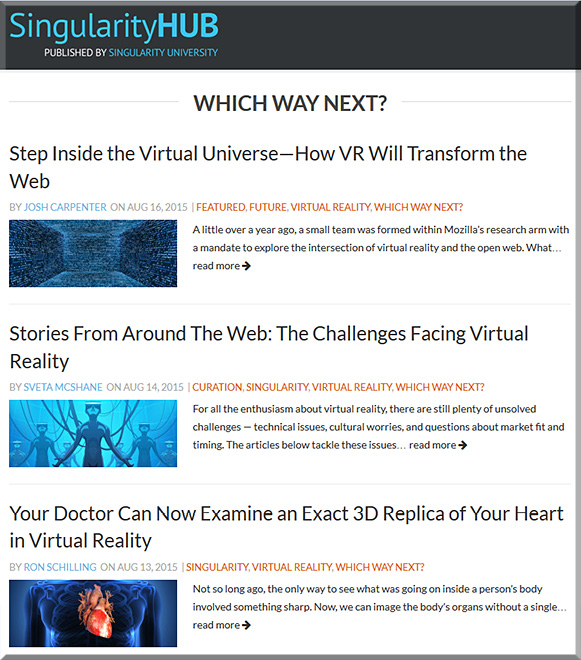Should You Buy the Hype? An Inside Look at the Virtual Reality Landscape — from singularityhub.com by Howie Leibach
Excerpts:
Consequently in 2014, less than two years after the Kickstarter, Facebook acquired Oculus for $2.2 billion dollars, and in doing so legitimized the VR industry overnight.
“We’re making a long-term bet that immersive, virtual and augmented reality will become part of people’s daily life,” said Zuckerberg.
With his track record for sniffing out “what’s next” and a distribution network of 1+ billion people, many have been quick to infer VR has a very bright future. Some analysts are already predicting VR will generate $30 billion in revenue by 2020, and many of Zuckerberg’s Silicon Valley counterparts haven’t hesitated to make similar predictions.
VR is still perhaps one or two years away from going mainstream, but more consumers are being exposed to it than ever before. Advancements in headset technology regularly make front page news on CNN, the Wall Street Journal, Business Insider and Wired. VR has even infiltrated the holy grail of pop-culture, prominently featured (and lampooned) on a recent episode of South Park.
But none of this VIP treatment matters if the product can’t sell. With the consumer Oculus Rift six to twelve months away, some are still on the fence, debating if they should buy the hype.
Realistically, many businesses don’t have time to wait and are already bracing for a future with VR in it. As executives scramble to invest in their own VR initiatives, many want to know what’s actually happening in the space.
Below are excerpts from Greenlight VR’s July Research Report, which investigate trends on the state of the industry, including VR growth, investments and opportunities.


Also see:
- Which Way Next? A New Singularity Hub Channel to (Re)Imagine the Future — from singularityhub.com by Sveta McShane; also see all of the items on the Which Way Next? channel.









